Registration of Geographical Indication
Geographical Indication or the GI Tags is an intellectual property rights that is given to any product coming from a particular geographical location and the product holds such qualities that are native or reputable because of that location.
Geographical Indication as an Intellectual Property Right is incorporated in Article 22 of the TRIPS Agreement.
Geographical indication requires the state member’s to protect the identity and uniqueness of the product that is originating from a particular geographical location. At the same time, it is prevented from using the identity for any other product which is not coming from that location, so as to protect the public from getting deceived. Because India is a signatory of the TRIPS Agreement, India has subsequently passed the Geographical Indication of Goods (Registration and Protection) Act, 1999 and the Rules on Geographical Indication of Goods (Registration and Protection), 2002.
The registration process of Geographical Indication
STEP 1 : Filing of application
The first step is to verify whether the geographical indication comes within the domain of the definition of Gl under section 2(1)(e).
The association of persons or any organization or producers or any authority must represent the importance of producers of the concerned goods and must file the affidavit on the process on how the applicant claims to correspond to their interest.
- Application must be prepared in triplicate form.
- The application must have the signature of the applicant or his agent and it should be accompanied by the complete statement of case.
- Details on the special characteristics and distinctiveness and how such standards are protected and maintained.
- Three certified copies about the map concerning the region to which the geographical indication relates.
- Details on the inspection of the structure if any to regulate and control the use of geographical indication in the location to which it relates.
- Give complete details on all the applicants together with the address. If there are a huge number of producers then a combined reference can be made in the application to all the producers of the G.I and the goods if registered shall be indicated accordingly in the register.
STEP 2 and 3: Preliminary verification and examination
- The Examiner shall inspect the application in case of any deficiencies.
- The applicant is bound to remedy the same within one month of the communication of deficiency with this regard.
- The content of the statement on the given case is assessed by a group of experts who are consulting and are well versed on that subject.
- The will ascertain and ensure the correctness of the information furnished.
- Subsequently an Examination Report shall be issued.
STEP 4: Show cause notice
- If the Registrar is having any objection in the application, he is obliged to communicate such objection.
- It is mandatory for the applicant to respond within the time period of two months and also apply for a hearing.
- The decision of the applicant shall be duly communicated. If the applicant wishes to make an appeal, he may request for the same within one month.
- The Registrar has got the power to withdraw any application, after giving a reasonable opportunity of being heard if it is accepted in error.
STEP 5: Publication in the geographical indications Journal
Every application shall be published in the Geographical Indications Journal.
STEP 6: Opposition to Registration
- Any person interested in opposing the registration can file the notice of opposition within three months which can be further extended by another one month on request but it has to be filed before the completion of three months while opposing the GI application that is published in the Journal.
- The registrar shall send and provide a copy of the notice to the applicant.
- The applicant shall within two months send a copy of the counter statement.
- If he is not able to do this, then it shall be deemed that he has abandoned his application. Where the counter-statement is filed, the registrar shall send a copy on the every person giving the notice of opposition.
- Subsequently, both sides will be able to give their concerned evidences by way of supporting documents and affidavit.
- A date for hearing of the case shall be fixed thereafter.
STEP 7: Registration
- Where an application for a geographical indication has been accepted, then the registrar shall register that particular geographical indication. If the same is registered then the filing date of the application shall be deemed to be the date of registration date.
- The registrar shall send a Certificate with the seal of the Geographical indications registry to the applicant.
STEP 8: Renewal of the GI
A registered geographical indication shall be valid for 10 years and shall be renewed by payment of renewal fee.
STEP 9: Additional protection to notified goods
The Act provides for additional protection for the notified goods.
STEP 10: Appeal
Any person aggrieved by the decision or order shall prefer and file an appeal to the intellectual property appellate board (IPAB) within three months.
What Geographical Indications are not registrable ?
For obtaining the registration, the indications must fall within the extent of section 2(1) e of GI Act, 1999. At the same time, it has to convince the provisions of section 9, which prohibits the registration of a Geographical Indication as given:

- the utilization of what would likely to deceive or create confusion; or
- the use would be contrary or opposing to the law for the time being in force; or
- something which contains or comprises of any scandalous or obscene matter; or
- which contains or comprises of any matter that are likely to hurt the religious susceptibility of any class of people or any section of the citizens of India for the time being in force or
- which otherwise would be dismantle to get protection in a court; or
- which are determined to be the indications or the generic names of the goods and are, therefore, not ceased to receive protection in their origin country or where such indications have fallen into disuse in that country; or
- which although accurately true as per the locality or the territory region in which the goods originate, but it falsely signifies to the persons that the goods are originated from another region, territory, or locality as the case may be.
Explanation 1 to section 9 explains the purposes of this section, the “generic names of the indications” in reference to goods which even though relates to the location of the region where the goods was initially manufactured or produced, has lost its original and novel meaning and has become a very common name of the goods and provides as a designation for the geographical indication of the nature, kind, type of the other property or characteristic feature of the goods.
Furthermore, Explanation 2 says that “in deciding whether the name of the product has become generic, the account shall be considered of all the factors that shall include the existing situation in that region or location in which the name has originated and the length of the area of consumption of the goods.
Additional protection to certain goods
- Any goods as notified by the Central Government for giving additional protection.
An application may be made to the registrar with respect to the goods for which a registered geographical indication in the Form GI-9 carried with a triplicate together with a statement of the case and shall be accompanied with the copy of the notification issued.
- The application shall be made by all the producers of the Geographical indication and by the registered proprietor of the Geographical indications in India and.
Affidavits
- The Affidavits that is required by the Act and the rules that should be filed at the Registry of Geographical indications or furnished to the Registrar, unless it is otherwise provided in the matter or with respect to matters to which they relate and each paragraphs consecutively numbered, and shall as far as practicable the paragraphs shall be confined to one subject.
- Every affidavit shall mention the description, information and the true place of residence of the person who is filing it and shall also mention the state on whose behalf it is filed.
- The Affidavits shall be taken
• In India-before any person or any court having the lawful authority to receive the evidence, or before any officer given power by such court as aforementioned to manage oaths or to take affidavit,
• In any country or in any place outside India before the diplomatic or consular Officers (Oaths and Fee) Act, 1948, or such place or country, or before any notary public or before a magistrate or judge of the country or place.
- Where the deponent is unacquainted with the language of affidavit a certificate by the person receiving the affidavit that the affidavit has been read, explained or translated to the deponent in his presence and the deponent has made his signature or mark in his presence.
- Every affidavit before the Registrar in association with the proceedings under any rules or under the Act shall be duly stamped under the law.
Frequently Asked Questions
A geographical indication (GI) is a sign that is used on the products having a particular geographical origin and also possess qualities or reputation because of its origin. Also there must be a clear link between the product and its original production place.
A geographical indication right shall enable to those having the right to use the indication and to prevent its use by the third party where the product does not conform to the standards applicable.
Geographical indications are normally used for agricultural products, wine and spirit drinks foodstuffs, handicrafts, and industrial products.
Registrations for geographical indications are not subject to any specific validity period. This would mean that the protection for a registered geographical indication shall remain valid unless that registration is cancelled. Geographical indications that are registered as certification and collective marks are usually given protection for the renewable term of ten-year periods.
The producers have got the right to use a protected geographical indication and the producers that belongs to the geographical area and comply with the particular conditions of production of the product.
Like all the intellectual property rights, these rights to geographical indications (GI) shall be enforced by the applying national legislation, in the court of law. The right to take any action shall vest with the public prosecutor, a competent authority, or any interested party, whether a natural individual or legal entity or whether private or public. The sanctions that are provided could be civil like actions for damages, injunctions, restraining unlawful acts, criminal or administrative.


